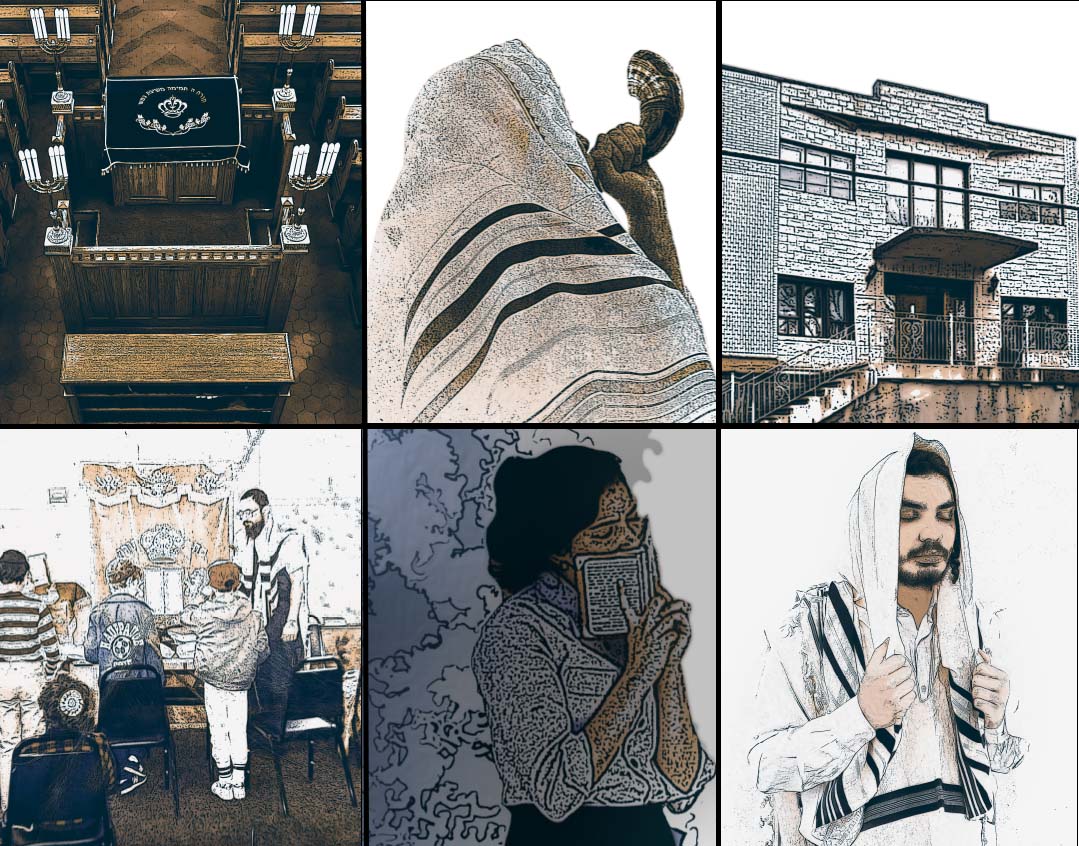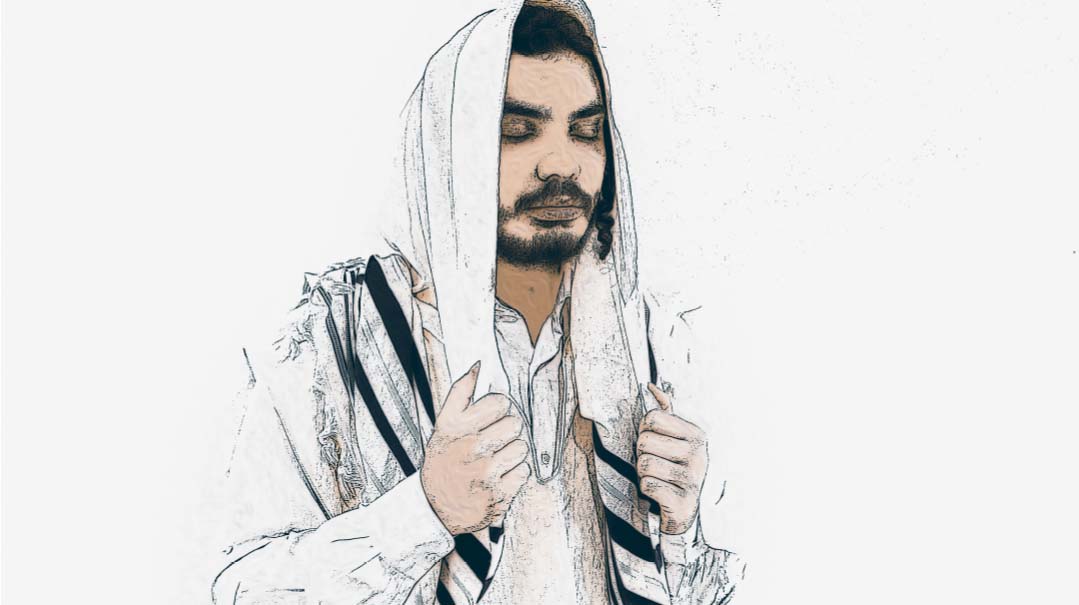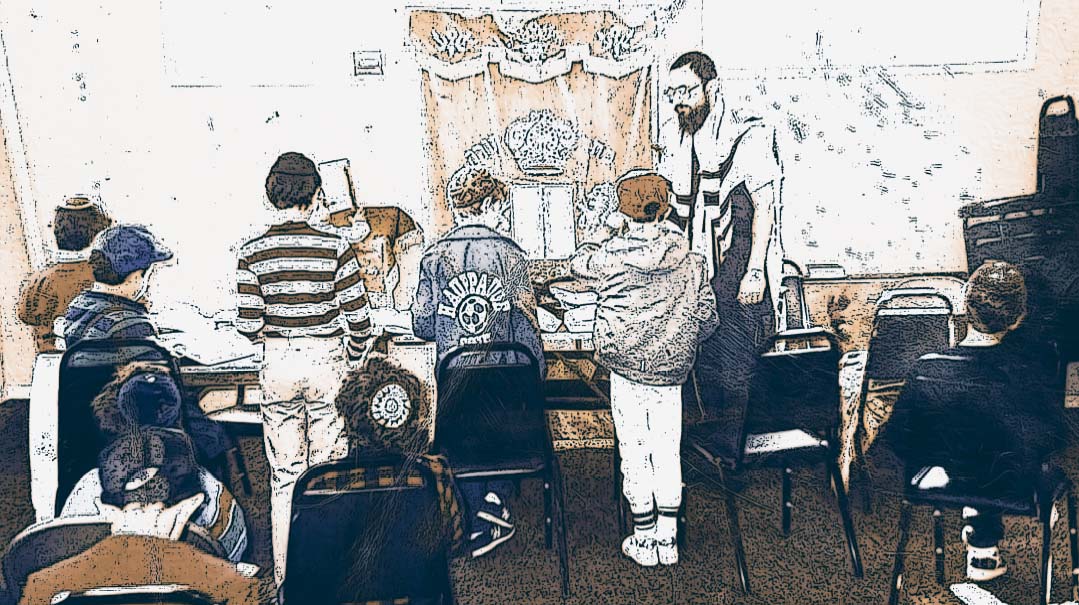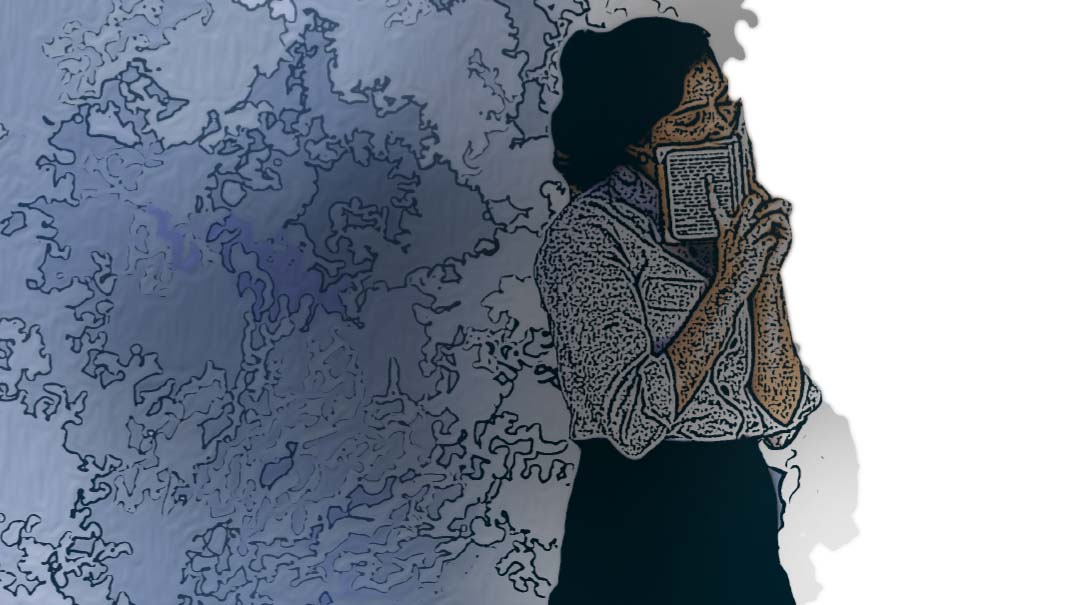View from the Veiber Shul
| August 31, 2021It was during Yamim Noraim, however, that the shul took on a completely different appearance — at least in the veiber shul
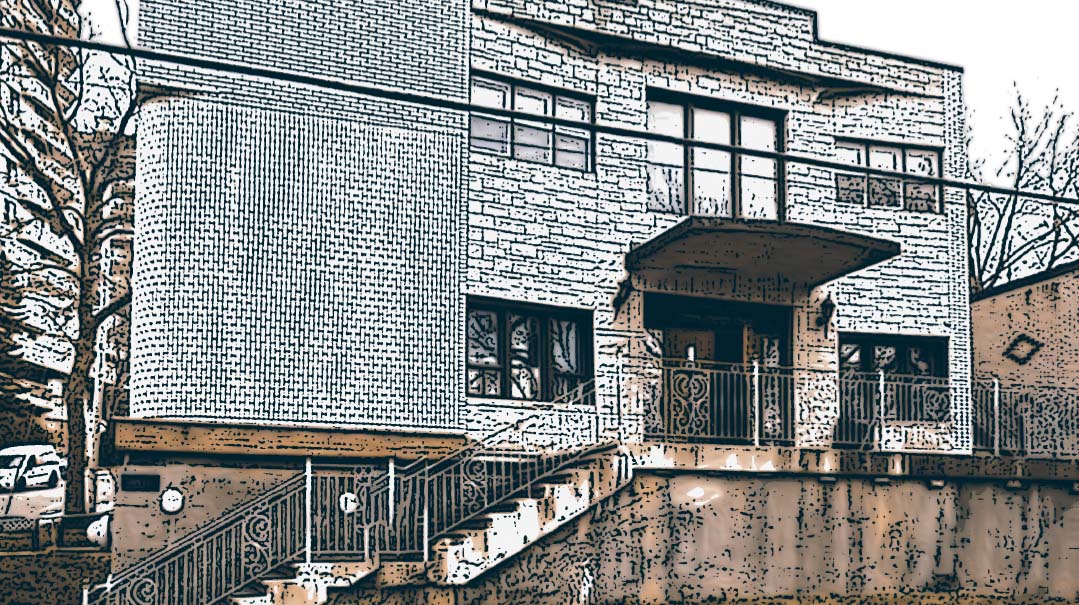
Beis HaKnesses Tefillah l’Moshe d’Zhibo
Montreal, Quebec
Shoshana Sperling
The smell of it lingers strongest in memory, I think. When I opened the heavy door, it was always the smell that hit me first: the combined odor of bleach, old plumbing, water-damaged wood, burnt kugel, and the infinitesimal trace of perfume left by the women who had preceded me up the stairs.
The gallery was a long, relatively narrow space, running the width of the men’s shul below. It was dim; the windows at the rear did not let in much light, and one or two of the fluorescent bulbs overhead always seemed on the verge of giving up.
We went almost every Shabbos, my sisters and I. My mother stayed home with my younger siblings, but we would often accompany my father on Friday nights and amuse ourselves in the deserted veiber shul. Maybe we davened; more likely, we entertained ourselves in a variety of ways. We roamed the gray-painted pews, patiently checking each hinged cubby for some forgotten treasure. Mostly, they were disappointingly empty, but occasionally we came across an extra pair of reading glasses, a box of tissues, and once or twice, a few candies, stuck fast to their wrappers. The seats themselves would have been unforgivingly hard but for the flat stadium cushions that someone in a bygone era had thoughtfully provided, each bearing the faded logo of the Montreal Alouettes.
Our seats were in the first row, overlooking the men’s shul below. The not-so-sheer yellow half-curtain that stretched across the front of the veiber shul did not allow us an unobstructed view of the goings-on below, but if we positioned ourselves properly, we could align ourselves with a gap that sometimes appeared where two pieces of curtain failed to meet and see the action downstairs more clearly.
What was there to see? Well, for one — my father. Once we got too old to go into the men’s section, we needed the reassurance that only seeing him could give us. He stood near the front, on the left-hand side of the room, swaying slightly in his beketshe and tallis, not back-and-forth, but more of a side-to-side shuckel that allowed him, as gabbai, to visually sweep the periphery of the shul (although my brother would avow that our father patented that move so that he could see when his son showed up to shul Shabbos morning).
The other mispallelim in the shul interested us no less. With our bird’s-eye view, we could see who was at the amud, who was getting an aliyah, and who was nudging the candyman, Uncle Max, every five minutes. Directly below us, we could sometimes overhear the schmoozers, as they discussed the latest in local politics or whether the Canadiens stood a realistic chance of getting to the Stanley Cup that year (in the late ’70s, they usually did).
And we could see the rav, or, more accurately, the “roov,” resplendent in his atarah and Shabbos beketshe. He had succeeded his father in this position at a relatively young age, and in my early teens, I would wonder to myself what this product of a thoroughly chassidish upbringing thought of his determinedly clean-shaven kehillah. At the time, though, I took it for granted that this was how it should be, as if having a rav who was overtly chassidish gave us, his congregants, the imprimatur of old-world legitimacy.
It was during Yamim Noraim, however, that the shul took on a completely different appearance — at least in the veiber shul. Then, the pews would fill up with the “next generation,” the families who came from “out of town” (which ironically, at the time, referred to New Yorkers) to spend Yom Tov with their parents, the elegant daughters-in-law of the sartorially simple women who comprised the “regulars,” and the women who had moved to different areas of the city more in keeping with their lifestyle, but who still came back to daven in the “alte heim.” Many a long hour on Rosh Hashanah and Yom Kippur, when Mussaf finished around 4:30 p.m., was filled in silent contemplation of these “strangers” to my ezras nashim. My sisters and I noted every detail of costume: the hats, big or small (as Paris dictated), the chic suits, the high-heeled shoes. Invariably, as we further analyzed the fashions of the day when we returned home, we wistfully asked our blonde-sheiteled mother why she wouldn’t wear a hat to shul.
Sometimes, the “young” rebbetzin would come up to wish “Git Yontiff” to the women in the veiber shul and stay for duchening, after which, as far as the women were concerned, davening was over. I used to look at her, with her white tichel or turban over her very short sheitel, white apron during the Yamim Noraim, maintaining an unassuming demeanor yet somehow standing out from the bevy of colorfully garbed, adorned, and perfumed women around her, a dove in a jungle of exotic birds.
Later, with maturity, I would come to perceive what these disparate women had in common, would come to learn about the various committees on which they served together, the Bikur Cholim meals they so efficiently organized, the silent club of the chevra kaddisha to which they belonged. But my nine-year-old self could not appreciate the nuances of sisterhood beyond the observable.
Later still, I would learn more about the older generation, those women who had experienced firsthand the yoke of belonging to the Kingdom of Heaven, who had emerged from the gates of Hell to begin anew in a land where the lingua franca they were forced to learn, well into adulthood, was their fourth or fifth tongue. They, whose many bracelets were not enough to conceal the numbers inked into their forearms, were the women I studied surreptitiously, watching their lips move in supplication, even as I wondered where they had been when they were my age.
For all its aesthetic deficiencies, I loved my shul. I had a proprietary feeling about it, and, while cognizant of the many ways in which it could be improved physically and perhaps enhanced spiritually, I felt at home in its narrow confines. A few years after I moved away, the shul underwent extensive renovations, and the women’s gallery was opened up with better lighting and tables and individual chairs.
But when I reflect back to my early years, it is the shul of my youth that memory conjures up and the sundry assortment of souls that peopled its dimly lit interior.
Shoshana Sperling, formerly of Montreal, lives and teaches in Northern New Jersey.
(Originally featured in Mishpacha, Issue 876)
Oops! We could not locate your form.

